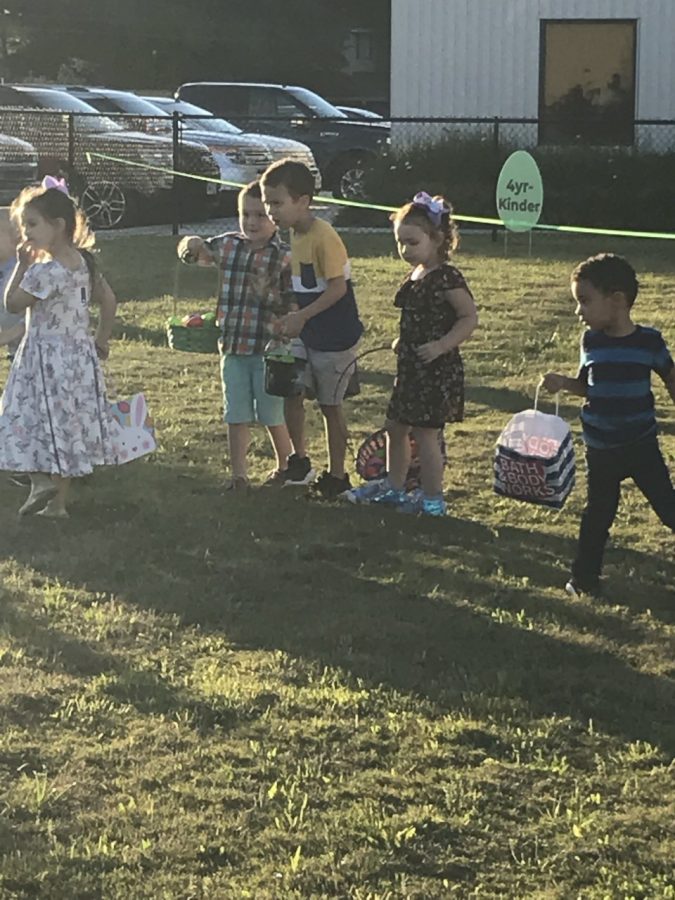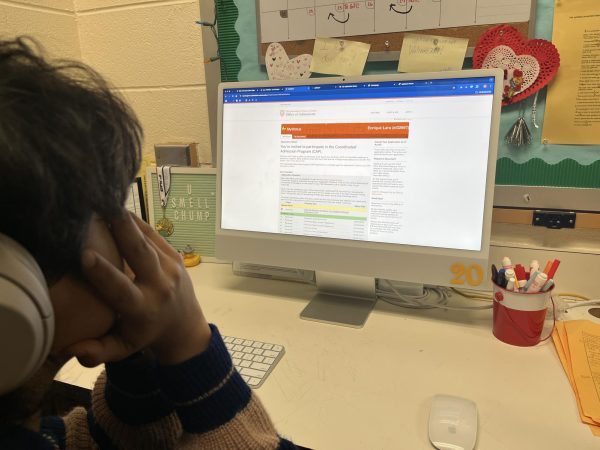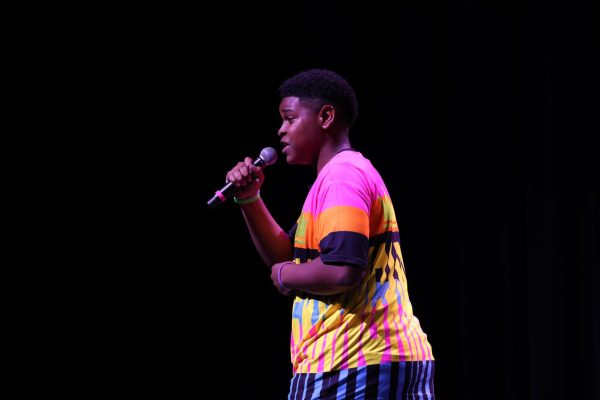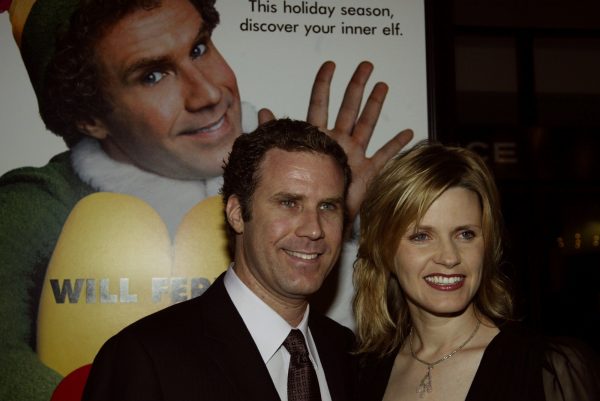Beyond the Bunny
Easter traditions continue despite quarantine
Preparing a strategic attack on the Easter candy, children at the Real Life Church line up for the Easter tradition last year. This year’s celebrations will be held differently due to COVID-19, but parents say the bunny is still heading to town.
Hippity Hoppity, the Easter Bunny is on his way with his basket of goodies to share with kids of all ages. Many people are looking to celebrate traditions of the season in similar but different ways.
“We will be having the kids leave out carrots for the Easter Bunny tomorrow night. We’ve [requested from the bunny] for the eggs to be hidden in the backyard and we have some craft stations set up so the kids can decorate their own eggs,” Tiffany Ramirez, mother of a Bernshausen Elementary 1st grader, said.
Most importantly a symbolic religious holiday with all kinds of traditions and customs, modern Easter celebrations have been adapted throughout the years, but this Easter, even more changes have had to be made.
“Our family normally attends church every Easter to participate in their celebration, so now we have to make it equally as fun here [at home],” Ramirez said.
Painting Easter eggs is one common such cherished tradition in the Orthodox and Eastern Catholic churches where the eggs are painted red to embody the blood of Jesus Christ that was shed on the cross. Other denominations picked up the tradition and adapted it to their observance of the holiday.
“The night before Easter, we color eggs and leave them outside for the bunny to hide the next morning,” Bernshausen 1st grader Rush Gurley said.
However, over the years, some of these practices were adapted and reinterpreted – and the results are celebrated by almost everyone, everywhere in the U.S. Even if you don’t believe in the magic of the Easter Bunny, you might enjoy biting the head off of one.
According to historians, the Easter Bunny first arrived in America in the 1700s with German immigrants who settled in Pennsylvania and transported their tradition of an egg-laying hare called “Osterhase”.
“My family is still going to dye eggs on Easter, but we are going to miss getting to be with our other family members,” sophomore Jordan Robertson said. “We usually go out of town on Easter weekend.”
Eventually, the custom spread across the U.S. and the fabled rabbit’s Easter morning deliveries expanded to include chocolate and other types of candy and gifts.
“Every year the Easter Bunny comes while we’re sleeping and hides eggs; he’s kind of like Santa in the springtime,” Gurley said.
Easter is the Christian celebration of the resurrection of Jesus, but the seasonal chocolate eggs and the bunny who delivers them are nowhere to be found in scripture.
“This year, my family is still going to eat dinner and watch church service on TV,” sophomore McKenna Russell said. Instead of their usual activities at church, Russell said she is glad to at least be able to share the time with her family.
While children may believe in the Easter Bunny, his exact origins are clouded in a mystery and children have tried to figure out where the Easter bunny lives.
“I think the Easter Bunny comes from a different planet with all the other bunnies called Easter Island,” Bernshausen Elementary first grader Garren Ramirez said.
Like so many other families who are following the health guidelines set by the government, the Easter holiday will look different in many households but people will make the best of the situation as always.
“It will be difficult for the kids to not be around their friends and other family members but due the circumstances, we are trying to make do,” Ramirez said.







